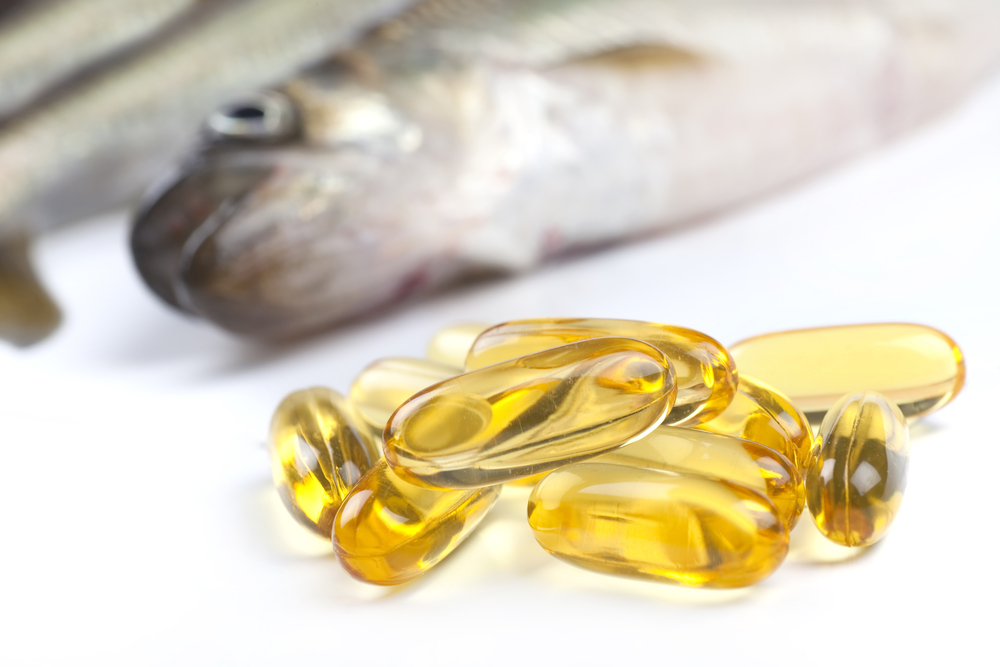Signs You’re Not Eating Enough Fat
It used to be thought that the way to long- term health was to eat as little fat as possible. But we now know this way of eating can have a catastrophic effect, promoting degenerative conditions rather than improving them, and also causing hunger pangs that lead to weight gain.
The main problem with low-fat diets is that they lack the special types of fat that are crucial for good health because of their anti- inflammatory and cardio- and cancer-protective effects. These are the omega 3 and omega 6 polyunsaturated fats (PUFAs), and also the omega 9 monounsaturated fats (MUFAs). The best sources of MUFAs are avocados, nuts (especially macadamia nuts) and olive oil. Olive oil is ideal in cold dressings and also in cooking at low temperatures e.g. soups, casseroles and sauces.
The best sources of PUFAS are oily fish, nuts and seeds (and their cold-pressed oils). In particular, the omega 3 fats EPA and DHA, from oily fish, have powerful anti-inflammatory effects and are therefore a crucial part of any healthy ageing programme.
So are you eating enough fat? If you suffer with any of the following you may not be getting enough of the right types:
Dry skin, ageing skin
Brittle nails
Atopic symptoms, including asthma and eczema
Excessive thirst and urination
Behavioural problems, including aggression
Low mood / anxiety / depression
Poor memory
Tendency towards inflammatory conditions
Hormonal imbalances / PMS
Crave fatty foods
Don’t feel satisfied after eating
Muscles easily fatigued
Dry flaky skin and or dandruff
Difficulty losing weight
If you’re concerned about your skin then don’t shun the fat. Sebum is the body’s natural moisturizer, which comes from fatty acids we produce. Some of the fats come from our own body stores, of course, while others have to come from the diet. So if your diet is too low in fat your skin may suffer.
If you’ve been following a low carb diet and keeping fats low you may start to feel very fatigued. While you may lose weight initially it is likely lack of energy, will make it hard to stick to the diet. Remember energy can be provided by fat particularly medium chain triglycerides found in coconut oil. Low-fat diets are notorious for making you feel ravenous, whereas low-carb, higher-fat diets can help curb appetites.
Omega 3 PUFAs from herring, mackerel, salmon, trout, sardines and other oily fish help to reduce the elevated levels of blood fats and inflammation found in metabolic syndrome and diabetes. They also increase levels of the hormone adiponectin that helps to prevent insulin resistance. This is useful to know if you are overweight because those extra pounds hamper the secretion of this healthy ageing hormone.
Despite their bad press saturated fat is the only natural fat that doesn’t become toxic when it is used in baking and frying. Coconut contains a type of fat called medium-chain triglycerides (MCTs). MCTs are less likely than animal fats to be stored in your fat cells and are more likely to be burned for energy. Moreover, using MCTs as the main type of saturated fat in your diet may reduce your overall food intake and promote weight loss. And while saturated fats are known for raising cholesterol levels, coconut fat appears to also increase the protective type of cholesterol.
The right types of fat are also essential for cognitive function. In particular the brain needs phospholipids and omega 3 fats. DHA is one of two brain-supportive fats found in oily fish. The other is EPA. Oily fish include sardines, trout, anchovies, salmon and mackerel. You should either make sure you are eating these fish at least three times a week or take a fish oil supplement. Flax, chia and pumpkin seeds and walnuts are good sources of other types of omega 3 fats for cell membrane health but they don’t have such a marked effect on brain function as EPA and DHA. Low levels of DHA in the blood are associated with cognitive decline in both healthy elderly people and Alzheimer’s patients, and higher DHA intakes are associated with a lower risk of developing Alzheimer’s. However, supplementing EPA and DHA (e.g. in fish oil) appears to improve learning and memory in cases of mild cognitive impairment but not in Alzheimer’s. This tells us that if we are to make a significant difference nutritionally, it is better to get started early on, before the imbalances have become entrenched diseases. A number of studies have also shown that medium chain triglycerides whether found in refined MCT oil or in coconut oil – can improve cognitive function by increasing ketone availability. In addition krill oil, which contains omega-3 fats in phospholipid form, may also improve cognitive function.
A lack of these important omega 3 fats has also been implicated in mood disorders. Improving their levels has frequently been found to improve symptoms. There is increasing evidence, for example, that EPA may be helpful in depression. There is a third fatty acid that is crucial for brain structure and function. Its name is arachidonic acid (AA) but it is rarely deficient, because not only is it found in meat, poultry, eggs and dairy foods, but it is also produced in the body from the omega 6 fats found in seeds and seed oils.
The right balance of fats is equally important in controlling inflammation. The membranes of each of our cells contain special fats that are converted into chemicals that control inflammation in the body. These chemicals are called eicosanoids and some of them promote inflammation, while others are anti- inflammatory. The type of eicosanoids you produce depends largely on the balance of the special precursor fats in your cell membranes. The fats we’re referring to here are the omega 6 and omega 3 polyunsaturated fatty acids (PUFAs).
Inflammation tends to increase in the body, the older we get. If you want to age well, you need to make sure you are getting a healthy balance of omega 6 and omega 3 fats – this will help to keep a lid on any tendency towards inflammation. What’s more, eating a healthy balance of these fats also keeps the membranes of all our cells healthy, improves our levels of blood fats and cholesterol, and may reduce our risk of many chronic diseases, including diabetes, depression and certain cancers. So, what do we mean by ‘a healthy balance’? Scientific experts in this area say we should be consuming omega 6 and omega 3 fats in a ratio of about 3 to 1. In other words, we should be eating three times as much omega 6 as omega 3. The UK government currently recommends a ratio of 5 to 1. The problem with the typical diet today is that the ratio is more like 20 to 1. This is because we eat so many omega 6-rich vegetable and seed oils and spreads, and we very rarely eat omega 3 foods like flaxseeds and oily fish. Without sufficient omega 3 in the diet, your body will become gradually more inflamed the older you get.
Make sure you are also eating three 100g (4oz) servings of oily fish a week, for their omega 3 fats. Oily fish includes fresh, tinned and smoked salmon, mackerel, trout, herring and sardines. It also includes fresh tuna but not tinned, as this is usually defatted before canning. (A word of caution, however: tuna, like other large fish, can contain contaminants such as mercury and dioxins. I recommend eating mainly the smaller fish, such as sardines, mackerel or anchovy, as these tend to be less contaminated.)
If you are a vegetarian or vegan, you can get some omega 3 fats from rapeseed oil, walnuts, flaxseeds and oil, chia seeds, hemp seeds, pumpkin seeds, tofu and green superfoods. But conversion is not good so it can still be difficult to get sufficient DHA and EPA
There is one type of omega 6 fat that has an important role in modulating inflammation: gamma linolenic acid (GLA). GLA comes from plants such as borage or evening primrose oil.
If you have not regularly been eating oily fish three times a week, you can boost your levels of anti-inflammatory fats by taking a fish oil supplement. For general health, take one that provides 500mg a day of combined EPA and DHA. If you have an increased risk for cardiovascular disease (such as high blood pressure or a family history of heart attack, angina or stroke) increase this to 1000mg a day. And if you have an overt inflammatory condition, such as rheumatoid arthritis or another autoimmune diseases, or if you have painful osteoarthritis, take 1800mg for three months, and then gradually reduce it to 500– 1000mg, depending on your symptoms. EPA and DHA may also have a positive effect on neuropathic pain.
The fats to avoid are the trans-fats and excessive amounts of saturated fats. Trans-fats are vegetable oils that have been chemically altered to make them firmer and to increase their shelf life. They are found in most processed foods, and for optimal health you need to avoid them. (Trans-fats are already banned in Denmark, Austria, Switzerland, New York and California.)
Remember you need fats for your body to function so focus on the right types and the right balance for healthy ageing.

